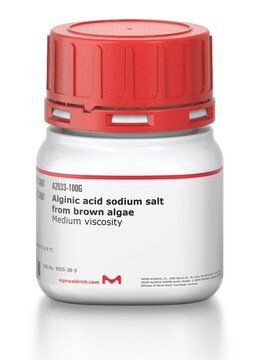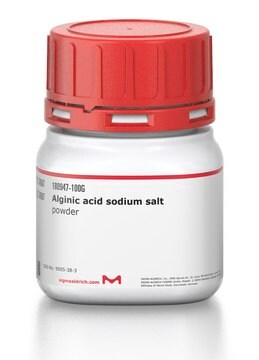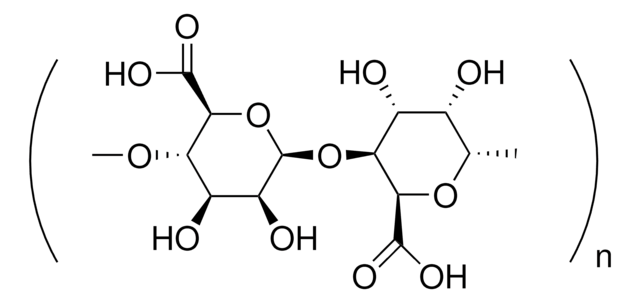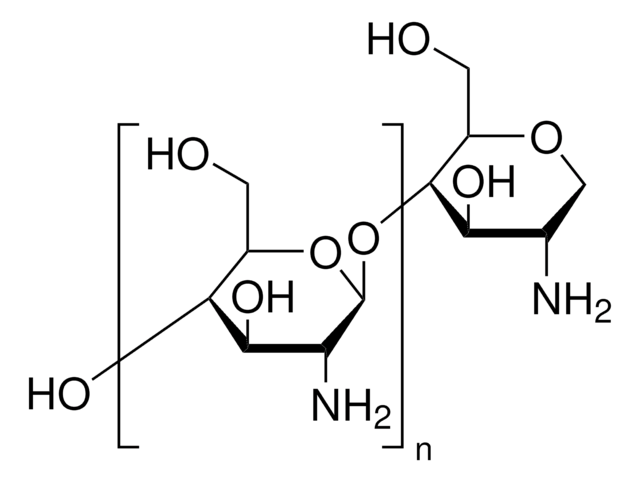A1112
Alginic acid sodium salt from brown algae
low viscosity
Synonym(s):
Algin, Sodium alginate
About This Item
Recommended Products
biological source
algae (brown)
form
powder
color
white to brown
viscosity
4-12 cP, 1 % in H2O(25 °C)
solubility
water: 10 mg/mL, cloudy to hazy, faintly yellow
storage temp.
2-8°C
SMILES string
[Na+].[O-]C(=O)C1O[C@H]([C@H]([C@H]([C@@H]1O)O)O)O
InChI
1S/C6H10O7.Na/c7-1-2(8)4(5(10)11)13-6(12)3(1)9;/h1-4,6-9,12H,(H,10,11);/q;+1/p-1/t1-,2-,3-,4?,6+;/m0./s1
InChI key
MSXHSNHNTORCAW-MPGIDXPLSA-M
Looking for similar products? Visit Product Comparison Guide
Application
Other Notes
Storage Class
11 - Combustible Solids
wgk_germany
WGK 1
flash_point_f
Not applicable
flash_point_c
Not applicable
Choose from one of the most recent versions:
Certificates of Analysis (COA)
Don't see the Right Version?
If you require a particular version, you can look up a specific certificate by the Lot or Batch number.
Already Own This Product?
Find documentation for the products that you have recently purchased in the Document Library.
Our team of scientists has experience in all areas of research including Life Science, Material Science, Chemical Synthesis, Chromatography, Analytical and many others.
Contact Technical Service




